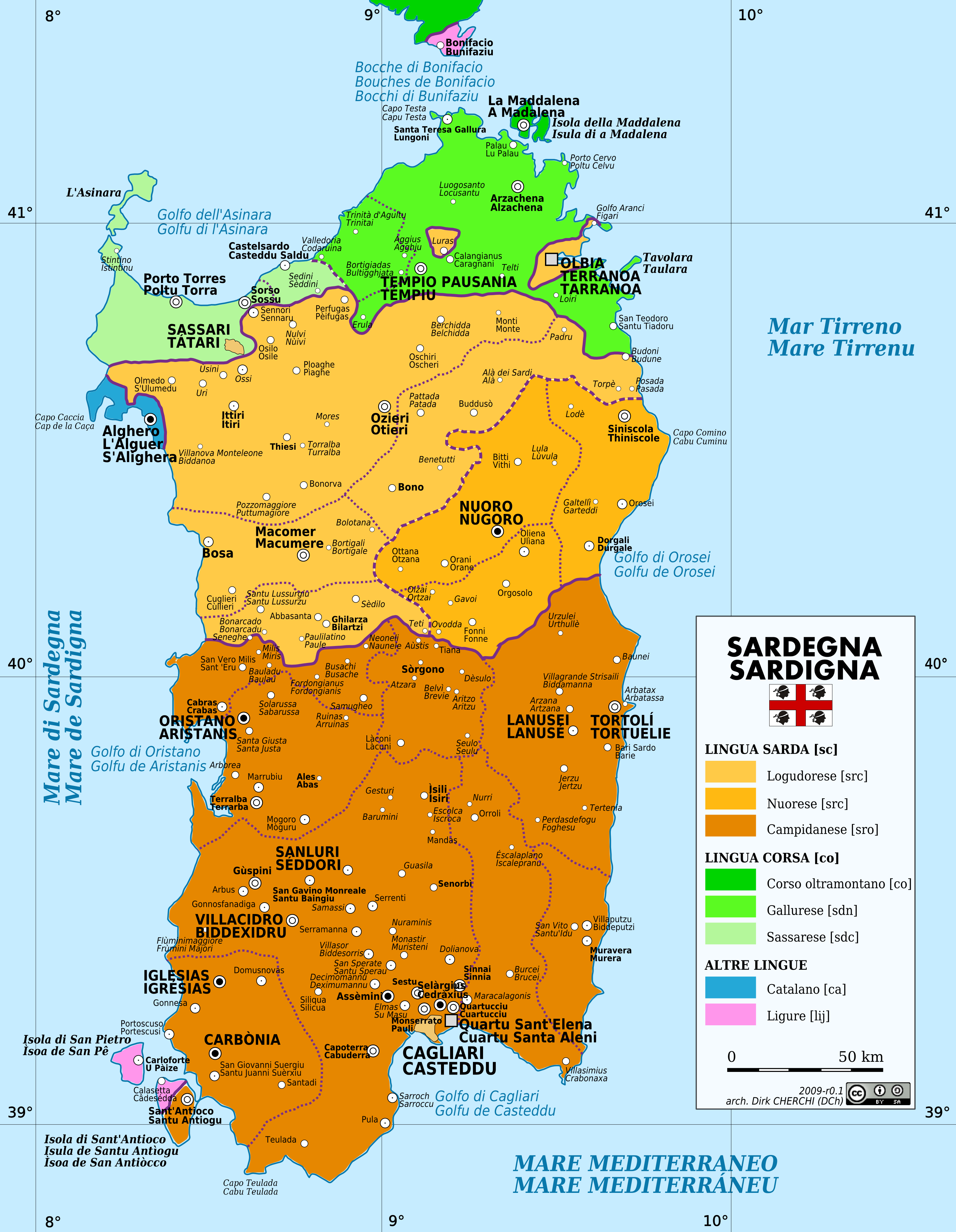Hi guys! Happy April! Have any of you been fooled today?
So as you may know, April is the month of the A to Z Challenge; a challenge wherein participants attempt to write 26 blog posts throughout the month, each corresponding to a specific letter of the alphabet. Due to the number of posts required, it’s a good idea to pick a theme and mine for 2016 is endangered languages. That means if you’re visiting or following my blog, you get to learn about 26 endangered languages this month.
If you want to find any of these posts throughout the month, then click on the A to Z of endangered languages link in the menu; this will take you to all the posts from 2016 and the ones I previously wrote, in 2014.
But anyway, let’s begin with our first language, and A is for Alguerès.
Algherese Catalan, or Alguerès, is a variant of Catalan spoken by an old immigrant community who live in the town of Alghero in northwest Sardinia. Catalan speakers first began arriving in Alghero in the mid-fourteenth century, after a treaty was signed that partitioned the island and gave ownership of Alghero to the Crown of Aragon.
There are approximately 10,000-30,000 speakers of Alguerès (Moseley, 2010; UNESCO, 2011) and though 90% of Alghero’s population understand some Alguerès, only 20% speak it and it appears that children stop using the language when they reach school age. This may impact upon intergenerational transmission in the future, increasing the decline of Alguerès; it is for this reason, as well as increased pressure from other nearby languages, that Alguerès is classified as endangered.
Linguistically, Alguerès differs from standard Catalan in many ways – its phonetics have been particularly affected, with some of this being due to contact with speakers of other languages in Sardinia. There are also some morphological differences, including many borrowed words from Sardinian, Spanish and Italian.
Although Alguerès is an endangered language, there are measures being taken among the community to preserve it; these include cultural events, journals, newspapers and classes, including classes for varying ages of school children through the Joan Palomba Project (Argenter, 2008; Ballone, 2008). Hopefully these measures will be enough to ensure the survival of Alguerès for some time yet.
References
Argenter, J. A., 2008. L’Alguer (Alghero), a Catalan Linguistic Enclave in Sardinia. International Journal of the Sociology of Language, 193/194, 205-217. Available from: https://www.academia.edu/5492085/LAlguer_Alghero_a_Catalan_linguistic_enclave_in_Sardinia. [Accessed 01 April 2016].
Ballone, F., 2008. Corpus Oral de l’Alguerès. Available from: http://prosodia.upf.edu/coalgueres/en/index.html. [Accessed 01 April 2016].
Moseley, C., ed., 2007. Encyclopedia of the World’s Endangered Languages. Oxon: Routledge.
Moseley, C., ed., 2010. Atlas of the World’s Languages in Danger. Paris: UNESCO Publishing. Online version: http://www.unesco.org/culture/en/endangeredlanguages/atlas.
Wikipedia, 2016. Algherese Dialect. Available from: https://en.wikipedia.org/wiki/Algherese_dialect [Accessed 01 April 2016].
Further Reading
Endangered Languages Project: Algherese Catalan.
Mo’s Language Learning Journey: Trip to Alghero, Sardinia, Italy & speaking Italian & Catalan!
The Dialect of Alghero: continuity and change; Maria-Pilar Perea.


What an excellent subject. The whole of human history is written in our languages.
Thank you! 🙂 And yep, true!
A great start to AtoZ. It’s encouraging that they’re actively working to preserve the language. 🙂
Jamie Lyn Weigt | Writing Dragons Blog
Thank you, and yes it’s so great when they are, especially if there’s a combination of governmental + community involvement. Unfortunately this isn’t the case for a lot of languages, particularly those outside of Europe. Thanks for commenting! 🙂
Yes I used to live there. It has its own TV station
But as you can see the whole island is very fascinating linguistically